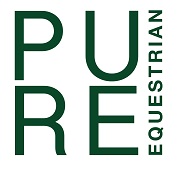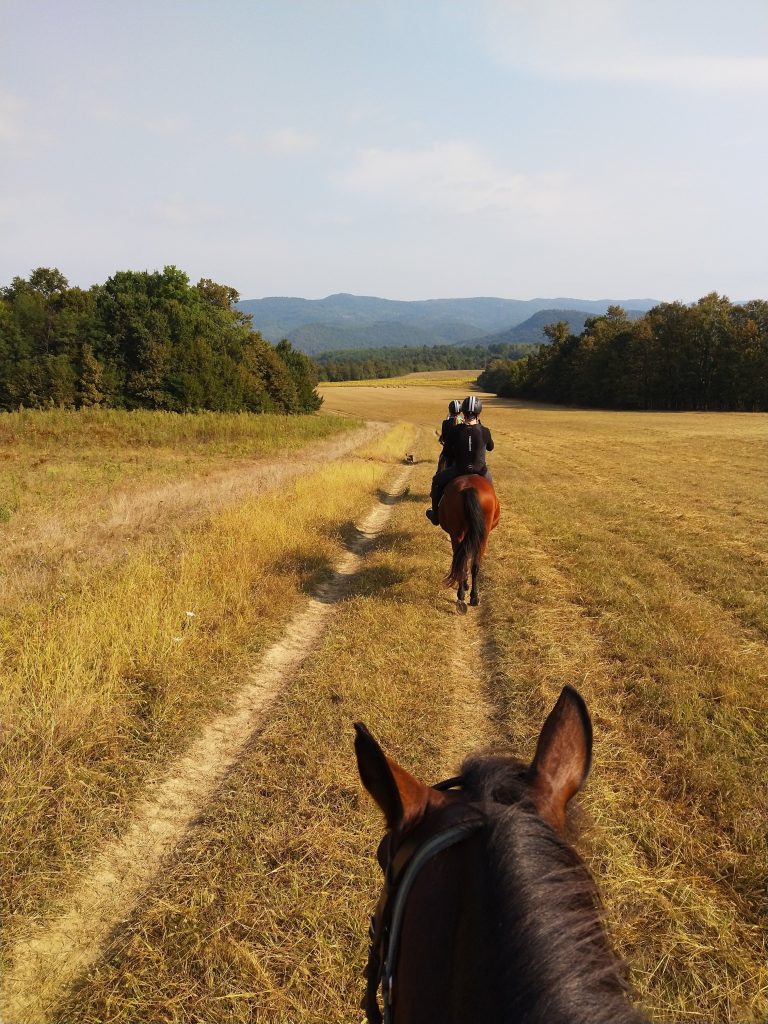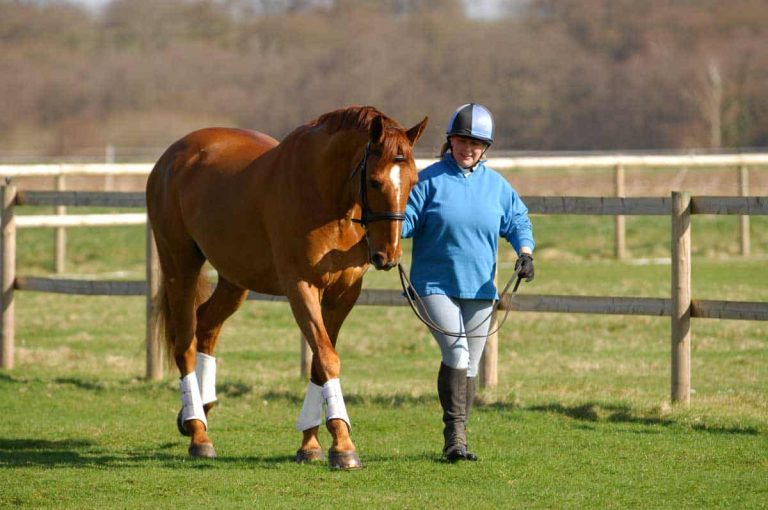So you’ve decided to embark on an equestrian adventure in the beautiful United Kingdom? Whether you’re a complete novice or have dabbled in horseback riding before, it’s essential to prioritise safety as you embark on this exciting journey. In this article, we’ll provide you with a handful of invaluable tips to ensure a safe and enjoyable equestrian experience. From wearing the right gear to understanding horse behaviour, these practical suggestions will help you navigate your way through the equestrian world with confidence and ease. So saddle up and get ready to learn some essential safety tips for beginners in the UK!
Table of Contents
ToggleChoosing the Right Equestrian Centre
When it comes to pursuing your passion for horse riding, choosing the right equestrian centre is crucial. It will not only ensure a safe and enjoyable experience but also provide you with the necessary facilities and guidance to improve your skills. To make an informed decision, it is essential to research different equestrian centres, consider the facilities and safety measures they provide, and check their reputation and reviews.
Researching Different Equestrian Centres
Researching different equestrian centres is the first step towards finding the one that suits you best. Look for centres that are conveniently located and offer a variety of programmes and services catering to riders of different skill levels. Take the time to visit their websites, read about their history and mission, and review the types of lessons they offer. Consider reaching out to the centres directly to ask any specific questions you may have about their facilities or programmes.
Considering the Facilities and Safety Measures
When considering an equestrian centre, pay attention to the facilities and safety measures they have in place. Look for well-maintained stables, riding arenas, and turnout areas. Ensure that the centre has proper lighting and ventilation in their facilities. Additionally, inquire about the safety protocols they follow, such as the use of safety stirrups, protective equipment, and qualified instructors. A reputable equestrian centre will prioritise the well-being of both riders and horses.
Checking the Reputation and Reviews
To gain a better understanding of a particular equestrian centre, it is essential to check their reputation and reviews. Seek feedback from current or past riders who have experience with the centre. Consider asking about the quality of instruction, the demeanour of the staff, and the overall satisfaction of the riders. Reading online reviews can also provide valuable insights into the experiences of others. By doing thorough research and checking reviews, you can make an informed decision and choose an equestrian centre that meets your needs and expectations.
Selecting the Appropriate Gear
Selecting the appropriate gear is crucial for both your safety and comfort while riding. When it comes to horse riding, there are several essential pieces of gear that you should invest in: a well-fitting riding helmet, protective riding gloves, and sturdy riding boots.
Choosing a Well-Fitting Riding Helmet
A well-fitting riding helmet is the most important piece of gear you will need. It provides protection for your head in case of a fall or impact. When selecting a riding helmet, ensure that it meets safety standards and is specifically designed for horse riding. Visit a reputable tack shop or consult with knowledgeable equestrian professionals to find the right size and style for your head shape and personal preferences. Remember, a helmet should fit snugly but comfortably, with the chin strap securely fastened.
Using Protective Riding Gloves
Protective riding gloves offer several benefits, including improved grip and protection for your hands. When choosing riding gloves, look for ones made from durable materials that allow for flexibility and breathability. They should fit snugly without restricting your movement. Inspect the gloves for any signs of wear or damage before each ride, as they play a crucial role in maintaining a firm grip on the reins.
Wearing Sturdy Riding Boots
Wearing sturdy riding boots is essential for the safety and stability of your feet and ankles. Look for boots specifically designed for horse riding, with a low heel and a treaded sole. This will prevent your foot from slipping through the stirrup and provide adequate support while riding. Invest in boots made from quality materials that are water-resistant and durable. It is also essential to ensure that the boots fit properly, as ill-fitting footwear can lead to discomfort and potential accidents while riding.
Understanding Horse Behaviour
Understanding horse behaviour is crucial for developing a positive and respectful relationship with these magnificent creatures. Horses communicate primarily through body language, and being able to interpret their signals accurately can enhance your riding experience and keep you safe. Learning the basics of horse body language, recognising signs of fear or aggression, and establishing trust and building a relationship are fundamental aspects of understanding horse behaviour.
Learning the Basics of Horse Body Language
Horses convey their feelings and intentions through subtle cues in their body language. By learning to recognise these cues, you can better understand and communicate with the horse. Pay attention to their ears, eyes, tail, and overall posture. For example, ears flattened back may indicate aggression or annoyance, while a relaxed tail and soft eyes signify contentment. Observe horses in different situations and pay attention to their responses to various stimuli to become more familiar with their body language.
Recognising Signs of Fear or Aggression
As a rider, it is essential to recognise signs of fear or aggression in horses. Understanding these behaviours can help you assess potentially dangerous situations and respond appropriately. Signs of fear may include wide eyes, a tense body posture, and a rapid breathing rate. Aggression can be displayed through pinned ears, bared teeth, or kicking out. If you notice any of these signs, it is crucial to proceed with caution and give the horse the space and time needed to calm down.
Establishing Trust and Building a Relationship
Establishing trust and building a relationship with a horse takes time and patience. It is important to approach horses with respect and kindness, allowing them to become comfortable in your presence. Spend time grooming, feeding, and interacting with the horse in a calm and gentle manner. Consistency and clear communication are key to building trust. Through consistent positive experiences, you can develop a strong bond with your horse, which will enhance your riding experience and create a harmonious partnership.
Mounting and Dismounting
Mounting and dismounting are fundamental skills that every rider must master to ensure their safety and the comfort of the horse. Learning proper mounting techniques, practicing safe dismounting procedures, and understanding emergency dismounts are essential aspects of mounting and dismounting.
Learning Proper Mounting Techniques
Proper mounting techniques are essential to ensure a smooth and safe transition onto the horse’s back. Approach the horse from the side, ensuring that it is aware of your presence. Hold the reins in one hand while placing your left foot in the stirrup. Maintain a secure grip on the reins and use your right hand on the saddle or the horse’s withers for support. With a small jump and a slight swing of the leg, lift yourself up and swing your right leg over the saddle. Take time to adjust your stirrups and ensure your feet are secured before proceeding.
Practicing Safe Dismounting Procedures
Safe dismounting procedures are just as important as mounting techniques. To dismount safely, bring the horse to a stop, maintain a balanced position in the saddle, and remove your feet from the stirrups. Shift your weight slightly to the left side while holding onto the reins to maintain control. Swing your right leg over the horse’s hindquarters and gently lower yourself to the ground, landing softly on your feet. Keep a firm grip on the reins as you dismount to ensure the horse remains calm and under control.
Understanding Emergency Dismounts
Understanding emergency dismounts is crucial for situations where immediate dismounting is necessary for your safety. Emergency dismounts are performed when a horse becomes uncontrollable or presents a potential danger. Perform an emergency dismount by leaning forward and holding onto the mane or neck for support. Swing your right leg over the horse’s hindquarters and push away from the horse, allowing your body to clear the horse’s back completely. Aim to land on your feet with your hand still on the reins to maintain control of the horse.
Developing a Solid Foundation in Riding
Developing a solid foundation in riding is essential for becoming a skilled and confident equestrian. Starting with beginner lessons or courses, focusing on balance and posture, and mastering basic riding skills are key aspects of building a strong foundation.
Starting with Beginner Lessons or Courses
Starting with beginner lessons or courses is invaluable for riders of all ages and experience levels. These lessons provide a structured and progressive learning experience, focusing on the fundamentals of horse riding. Qualified instructors will guide you through the basics, teaching you proper positioning, how to communicate with the horse, and the correct use of aids. Taking the time to build a strong foundation at the beginning will set you up for success as you progress in your riding journey.
Focusing on Balance and Posture
Balance and posture are fundamental aspects of riding that directly impact your stability and overall control. Maintaining a balanced position in the saddle allows you to communicate effectively with the horse and respond to its movements. Work on strengthening your core muscles, which are essential for maintaining a stable seat. Focus on sitting tall, aligning your shoulders, hips, and heels, and keeping a soft and supple connection with the horse’s mouth through the reins. Consistent practice and awareness of your body position will lead to improved balance and a more harmonious riding experience.
Mastering Basic Riding Skills
Mastering basic riding skills is a crucial step in developing a solid foundation in riding. Key skills include the ability to walk, trot, and canter comfortably, execute smooth transitions, and maintain a steady rhythm and pace. Practice these skills in a controlled environment, such as a riding arena, under the guidance of a skilled instructor. As you progress, you can gradually introduce more complex exercises and challenges to further refine your skills. Remember that patience and consistency are vital when mastering any skill, and continuous practice will lead to significant improvement over time.
Maintaining Proper Riding Etiquette
Maintaining proper riding etiquette is essential for the safety and enjoyment of all riders in an equestrian centre. Following the equestrian centre’s rules and regulations, respecting other riders’ space, and practicing effective communication and awareness while riding are key aspects of maintaining proper riding etiquette.
Following Equestrian Centre Rules and Regulations
Equestrian centres have specific rules and regulations in place to ensure the safety and well-being of both riders and horses. It is important to familiarise yourself with these rules and strictly adhere to them at all times. Rules may include guidelines for using specific areas of the facility, limitations on jumping or trail riding, or requirements for wearing specific safety equipment. By following these rules, you not only contribute to a safe environment but also set a good example for other riders.
Respecting Other Riders’ Space
Respecting other riders’ space is crucial to maintaining a harmonious and safe riding environment. Always be aware of your surroundings and give other riders plenty of space when passing or riding in a group. Maintain a safe distance between horses to avoid collisions and allow each rider to have adequate room to manoeuvre. Be mindful of the speed and direction of your horse to prevent unnecessary disruptions or accidents. Respecting other riders’ space fosters a sense of community and ensures a positive experience for everyone.
Communication and Awareness while Riding
Effective communication and awareness while riding are essential for maintaining safety and avoiding conflicts with other riders. Use clear and audible signals when passing or communicating with other riders, such as a verbal command or a polite request. Maintain an attentive and alert mindset, always scanning the surroundings for potential hazards. Furthermore, be aware of your horse’s behaviour and body language, as this can indicate its level of comfort or potential reactions. By communicating effectively and remaining aware, you create a safer riding environment not only for yourself but also for others.
Safety Precautions During Riding
Ensuring your safety during riding should always be a top priority. Incorporating safety precautions such as always wearing a riding helmet, using safety stirrups or appropriate footwear, and being mindful of speed and surroundings can significantly reduce the risk of accidents or injuries.
Always Wearing a Riding Helmet
Always wearing a riding helmet is a crucial safety precaution that should never be overlooked. A properly fitted and certified riding helmet provides vital protection for your head in case of a fall or impact. Regardless of your riding experience or the horse’s temperament, it is essential to wear a helmet every time you ride. Make it a habit to check your helmet regularly for any signs of wear or damage, as compromised helmets may provide inadequate protection.
Using Safety Stirrups or Footwear
Using safety stirrups or appropriate footwear is another important safety precaution to consider. Safety stirrups are designed to release your foot in the event of a fall, preventing it from becoming trapped in the stirrup and potentially dragging you. Additionally, wearing appropriate riding boots with a low heel and a treaded sole provides stability and prevents your foot from slipping through the stirrup. Proper footwear offers protection and support for your feet and ankles, reducing the risk of injury while riding.
Being Mindful of Speed and Surroundings
Being mindful of your speed and surroundings is crucial for maintaining a safe riding experience. Avoid excessive speeds, especially in crowded areas or unfamiliar terrain. Adjust your pace according to the horse’s comfort level and the conditions of the riding environment. Always be aware of potential hazards, such as uneven ground, obstacles, or approaching vehicles. By remaining attentive and adjusting your speed and path when necessary, you can minimise the risk of accidents and ensure the safety of both yourself and your horse.
Understanding the Basics of Horse Care
Understanding the basics of horse care is essential for the well-being and health of your equine partner. Gaining knowledge about grooming and tacking up, feeding and watering considerations, and recognising signs of illness or injury can help you provide appropriate care and address any potential issues promptly.
Learning About Grooming and Tacking Up
Grooming and tacking up are essential aspects of horse care that ensure the horse’s cleanliness, comfort, and well-being. Start by learning the proper techniques for grooming, including brushing the mane, tail, and coat, picking out the hooves, and cleaning the horse’s face and ears. Additionally, become familiar with the process of tacking up, which involves fitting the saddle, bridle, and other necessary equipment onto the horse. Regular grooming sessions not only maintain the horse’s hygiene but also provide an opportunity for bonding and building trust.
Feeding and Watering Considerations
Feeding and watering considerations are crucial for providing the horse with the appropriate nutrition and hydration. Familiarise yourself with the specific dietary requirements of horses, including the types of forage, concentrates, and supplements they need. Follow a regular feeding schedule, providing meals at consistent times each day. Ensure access to clean, fresh water at all times, as horses require a significant amount of hydration. Additionally, monitor the horse’s weight and condition and consult with a veterinarian or equine nutritionist for proper dietary guidance.
Recognising Signs of Illness or Injury
Being able to recognise signs of illness or injury is vital for prompt intervention and appropriate care. Familiarise yourself with common signs of disease or distress, such as abnormal behaviour, loss of appetite, lameness, or changes in coat condition. Regularly check the horse’s vital signs, including its temperature, heart rate, and respiratory rate, to monitor for any abnormalities. If you notice any concerning signs, consult with a veterinarian immediately for a proper diagnosis and treatment plan. By being vigilant and proactive, you can ensure the horse’s well-being and prevent any potential complications.
Knowledge of Riding Trails and Routes
Having knowledge of riding trails and routes can enhance your riding experience and ensure your safety when venturing outside of an enclosed riding arena. Researching and familiarizing yourself with local trails, understanding trail difficulty levels, and planning for weather conditions are important aspects of having knowledge of riding trails and routes.
Researching and Familiarizing with Local Trails
Researching and familiarizing yourself with local trails is a great way to expand your riding horizons and explore new environments. Look for equestrian trails in your area and gather information about their locations, terrain, and regulations. Identify any limitations on horse access or specific guidelines to follow. Take the time to visit the trails beforehand, either on foot or with a knowledgeable guide, to familiarise yourself with the surroundings and potential challenges. Being well-prepared and informed will enhance your enjoyment and safety while riding on local trails.
Understanding Trail Difficulty Levels
Understanding trail difficulty levels is crucial for selecting suitable routes that match your skill level and the capability of your horse. Trails are often categorised into different levels of difficulty, ranging from easy, moderate, to advanced. Consider factors such as the terrain, elevation changes, and potential obstacles when assessing the difficulty level of a trail. Start with easier trails and gradually progress to more challenging ones as you gain experience and confidence. Always prioritise the safety of yourself and your horse when deciding on which trails to explore.
Planning for Weather Conditions
Planning for weather conditions is an important consideration before embarking on a trail ride. Be aware of the forecasted weather and adjust your plans accordingly. Extreme weather conditions, such as heavy rain, strong winds, or extreme temperatures, may pose risks to both you and your horse. Ensure that you and your horse are adequately prepared for the weather, including wearing appropriate riding attire and considering additional protective gear, such as fly sheets or blankets. Being prepared for different weather scenarios will help make your trail rides safer and more enjoyable.
Knowing When to Seek Professional Help
Knowing when to seek professional help is essential for your growth as a rider and the safety of both you and your horse. Recognising the limits of your skills, seeking guidance from trained instructors or coaches, and getting assistance for difficult situations are key aspects of knowing when to seek professional help.
Recognising the Limits of Your Skills
Recognising the limits of your skills is crucial for personal growth and preventing potential accidents or injuries. It is essential to be honest with yourself about your abilities and not overestimate your experience level. If you find yourself facing challenges or encountering situations that seem beyond your capabilities, it is wise to take a step back and seek help. Acknowledging your limitations is a sign of maturity and demonstrates a commitment to your own safety and the well-being of your horse.
Seeking Guidance from Trained Instructors or Coaches
Seeking guidance from trained instructors or coaches is invaluable for improving your riding skills and knowledge. Qualified professionals have the expertise to assess your abilities, identify areas for improvement, and provide specific guidance tailored to your needs. Enroll in lessons or clinics with reputable instructors who can offer structured guidance and mentorship. Their feedback and instruction will help refine your riding technique, expand your knowledge, and navigate any challenges you may face. Embracing the opportunity to learn from experienced professionals will fast-track your progress as a rider.
Getting Assistance for Difficult Situations
Difficult situations may arise during your riding journey, and getting assistance is crucial for ensuring your safety and resolving any issues effectively. If you find yourself in a challenging or potentially dangerous scenario, do not hesitate to seek immediate assistance from trained professionals. This may include asking for help from other riders or contacting equestrian centre staff. Timely intervention can prevent the situation from escalating and ensure a positive outcome. Remember, there is no shame in asking for help, as it demonstrates responsibility and a commitment to the well-being of yourself, your horse, and others involved.
In conclusion, choosing the right equestrian centre, selecting the appropriate gear, understanding horse behaviour, mastering mounting and dismounting techniques, developing a solid foundation in riding, maintaining proper riding etiquette, prioritising safety precautions, understanding the basics of horse care, acquiring knowledge of riding trails, and knowing when to seek professional help are all crucial aspects for beginners in the UK. By following these comprehensive guidelines, you will be well-equipped to embark on a rewarding and safe equestrian journey. Remember, enjoy the process, be patient with yourself and your horse, and always prioritise your safety and the well-being of your equine companion. Happy riding!









